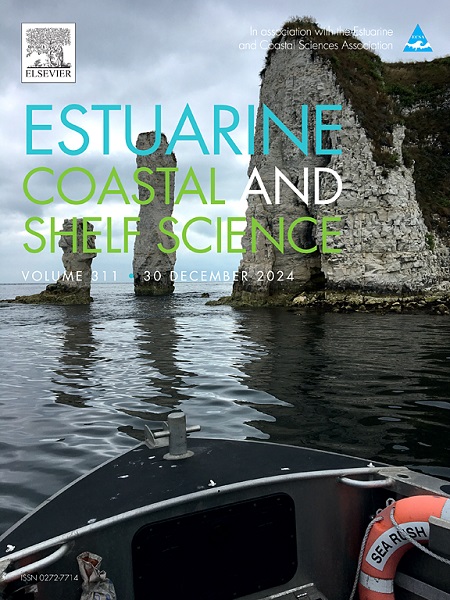Contrasting consequences of seabed liquefaction on juvenile and adult bivalves during a mega earthquake sequence
IF 2.6
3区 地球科学
Q1 MARINE & FRESHWATER BIOLOGY
引用次数: 0
Abstract
Mega earthquakes and associated disasters such as seabed liquefaction and tsunamis can have profound impacts on coastal ecosystems. However, the mechanisms underlying these impacts are difficult to identify because of the extreme difficulty of in-situ field observation during a disaster. In this study, we examined the processes by which an earthquake and accompanying seabed liquefaction could affect the Manila clam Ruditapes philippinarum by using a shaking table with control of seismic waveforms and an experimental tank. The clams floated up to the sediment surface (i.e., were expelled from the sediment) during seabed liquefaction because of their low body density in comparison to the density of the liquefied sediments. The magnitude of the liquefaction effect was affected by the clam's body size. Juvenile clams tended to be more affected by ground shaking and liquefaction but were able to quickly reburrow. By contrast, adult bivalves were rarely affected by liquefaction, but if affected they were less able to recover.

求助全文
约1分钟内获得全文
求助全文
来源期刊
CiteScore
5.60
自引率
7.10%
发文量
374
审稿时长
9 months
期刊介绍:
Estuarine, Coastal and Shelf Science is an international multidisciplinary journal devoted to the analysis of saline water phenomena ranging from the outer edge of the continental shelf to the upper limits of the tidal zone. The journal provides a unique forum, unifying the multidisciplinary approaches to the study of the oceanography of estuaries, coastal zones, and continental shelf seas. It features original research papers, review papers and short communications treating such disciplines as zoology, botany, geology, sedimentology, physical oceanography.

 求助内容:
求助内容: 应助结果提醒方式:
应助结果提醒方式:


